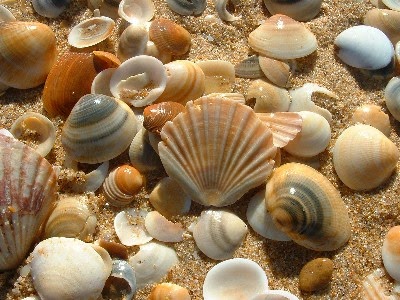It’s peak beach season and as beachcombers know, shells – washed up on the seashore and dotting the sand – are ripe for the picking.
I never saw a seashell until I was 13 years old. They’re scarce in land-locked, dry West Texas. But I visited a relative who had lived along the Texas coast for many years. She tried to teach me the fine art of shelling. She gave me a bucket and sent me out in the shallows. When I returned, she examined each shell in my bucket and discarded all but two. In my enthusiasm, I had collected ALL the shells – the chipped, the cracked and the broken. But I learned.
Serious shellers hit the beach at least five times per week. Being first on the beach at early morning and later in the evening may reward you with Angel Wings, Shark’s Eyes, Hairy Tritons, and Wentletraps.
I learned the Florida Gulf Coast is the best place for Cockle, Whelk, Coquina, Olive and Scallop. Kitten Paw can be found in the Southeastern U.S., Conch in Southern Florida, Oyster in Chesapeake Bay and Limpet in the Pacific Northwest and Southern Florida. Whelk are also plentiful along the Texas Gulf Coast.
For shelling success, you need to find a place to stay that is close to the beach. The richest days for hunting are one to two days after a storm when thousands of shells are dumped on beaches. Peak times to hunt are one hour before and one hour after low tide. Full and new moons, having the most extreme tides, provide excellent conditions for shelling. If seas are reasonably calm, step out into the shallows which may extend out 100 yards in places. Lucky shellers may scoop up a treasure before it is exposed to air. Don’t be afraid to get your hands dirty – search clumps of seaweed or grass where many fine shells hide out.
Remember these items of major importance:
1. Always check each shell for an inhabitant. Only empties should leave the beach.
2. States have shelling regulations. Learn them in advance, especially when visiting state parks, national parks and wildlife refuges. Some areas post limits or prohibit collecting certain types of shells.
There’s no finer souvenir from the lazy, hazy days of summer than the perfect shell or two (or more.)

No comments:
Post a Comment